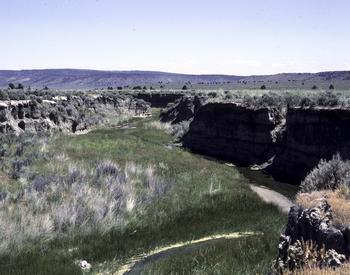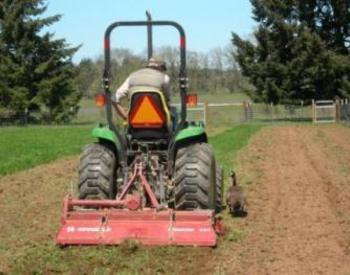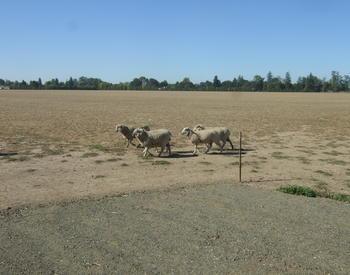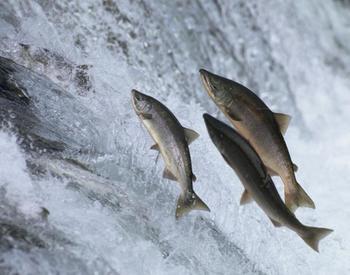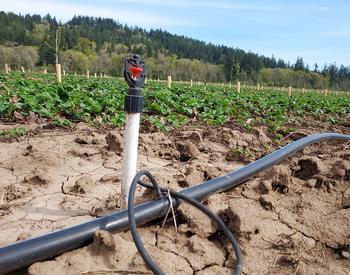Sessions of much-needed rain are a blessing to gardeners. Rain typically becomes rarer as summer progresses in many areas and drought predictions aren't uncommon. At the same time, gardening is enjoying a resurgence. How can home gardeners make the most of what water is available or affordable and still maintain a healthy garden?
One team at OSU has been collaborating to learn and share about commercial vegetable production with low water input: Center for Small Farms. Check out its website for information on what farmers are learning about growing vegetables with as little water as possible and which veggies produce best under these conditions.
For the landscape, “Water-Wise Gardening in Central Oregon” is extremely helpful, using a seven-step approach from planning and plant selection to maintenance. Many of the tips shared below are discussed in greater detail in this free OSU publication.
Plant selection
If starting with a clean garden slate, choose drought-tolerant plants from the beginning. If you’ve inherited a landscape, make sure that new additions are drought-tolerant.
The palette of appropriate plants is considerable, with cultivar selection important. For example, spirea and barberry are shrubs generally considered drought-tolerant, but there are many varieties of each, with varying levels of drought tolerance.
Remember, even plants suited to dry climates need water and attention during establishment. Deep watering encourages deep rooting, enabling plants to access water in the soil.
Efficient irrigation
Timers, drip systems, directed emitters — a good irrigation system saves time, money and water. An oscillating sprinkler is great fun for kids to play in, but it is very inefficient for water delivery, especially if the wind is high. Only a small percentage of the water is delivered to the root system where it’s most needed with these sprinklers.
Water delivered to foliage is of little benefit to the plant, and can contribute to disease if the leaves stay wet too long. When use of a hand sprinkler is necessary, deliver water as close to the root zone as possible rather than “raining” over the tops of plants.
Watering time
For the Klamath Basin, early morning is the most efficient time to water gardens. During the heat of the day, there is more evaporation, with less water delivered to the actual root zone. In many gardening references, both early morning and evening are suggested. In the Klamath climate, the steep temperature drop from daily high to nightly low makes evening watering less useful — plants become less able to “process” the water when temperatures drop quickly.
We see evidence of this in the frequency of edema — blistery, water-filled, and strange growths on the undersides of spinach, kale, lettuce and turnip greens. These strange-looking growths have been the topic of social media discussions among local gardeners. Avoiding evening watering is also worth considering when blossom-end rot is an issue.
Mulch
Any mulch is better than none, and many types are available to suit a wide range of aesthetic tastes and pocketbooks. Ideally, organic matter like shredded or chipped bark or pine straw is laid 3–4 inches thick between plants. Other products are also suitable.
The goal is to keep the soil from drying out, which increases the time that plants can access moisture in the soil. Most mulches also stabilize soil temperatures slightly. An additional benefit of a good mulch is weed suppression. Most mulches will break down over time, needing replenishment every few years.
Wind protection
Consider the placement of plants relative to prevailing winds. Constant wind exposure dries plants out more quickly, leading to additional water needs. Large and broad-leaved plants are more susceptible to this drying out than conifers, one of the many reasons some conifers make excellent windbreaks.
While selection, placement, mulching, and proper watering of plants can all help conserve water, many of the fruits we eat (including the ones commonly referred to as vegetables) are largely made up of water and need consistent watering for proper development. Peppers, for instance, are particularly prone to dropping off the plant if not enough water is available during fruit development.
Inconsistent water can make some fruits bitter. Once a watering pattern is established, consistency can enhance quality overall. A secret of professional vegetable growers is seemingly in contrast to this: Melon and strawberry growers say that cutting water off at the end of fruit development actually makes the fruit much, much sweeter.
